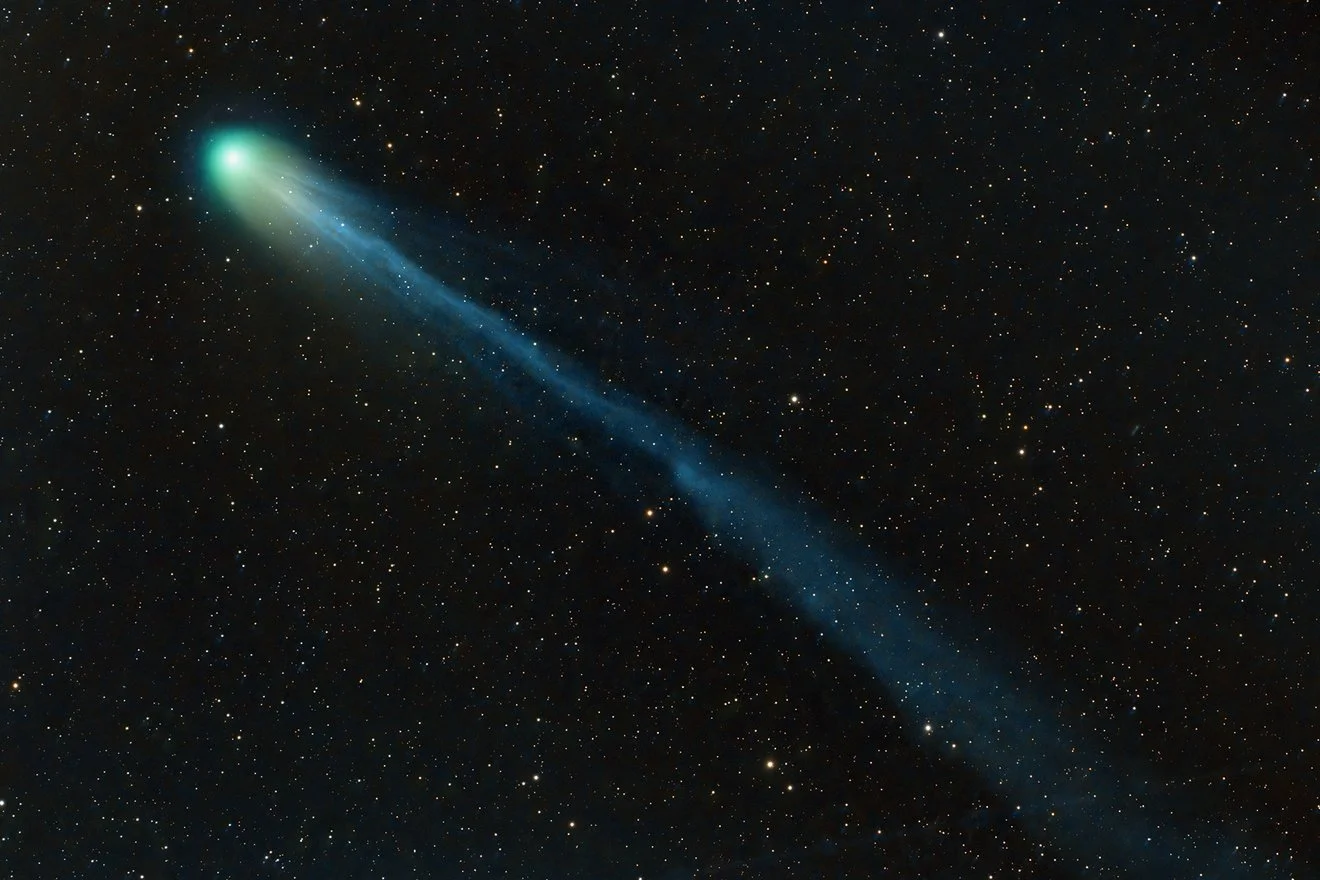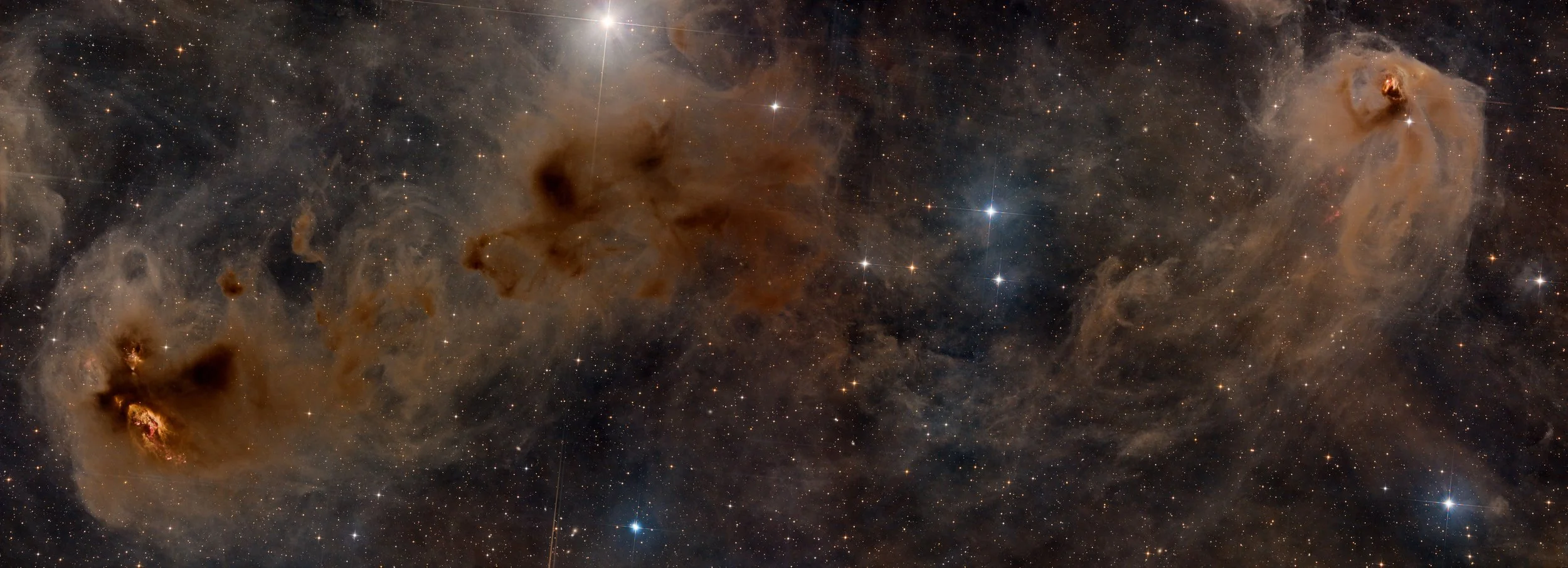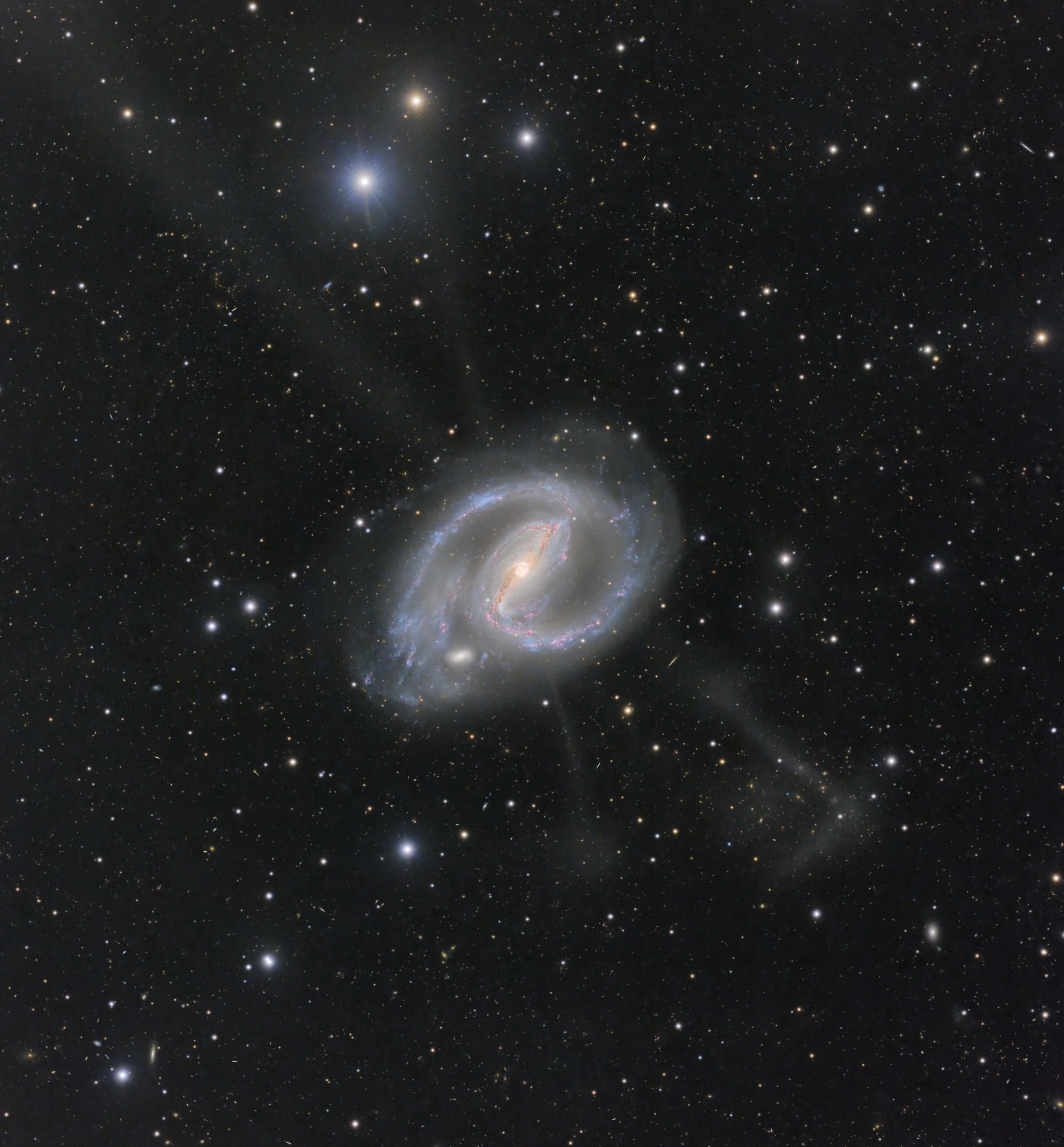
AAPOD2 Image Archives
Dolphin head nebula Sh2-308
Sh2-308, affectionately known as the Dolphin Head Nebula, dances gracefully amidst the tapestry of the cosmos, captivating astronomers with its ethereal beauty and enigmatic allure. This celestial wonder, located in the constellation of Canis Major, beckons stargazers to embark on a journey of cosmic exploration.
The Dolphin Head Nebula derives its name from its distinctive shape, which bears a striking resemblance to the graceful form of a leaping dolphin. This nebula, composed of glowing hydrogen gas illuminated by nearby stars, offers a glimpse into the tumultuous processes of stellar birth and evolution.
Comet 12P/Pons-Brooks
Comet 12/p Pons-Brooks, a transient visitor from the distant reaches of the solar system, graces the night sky with its ethereal presence. Named after its discoverers, Jean-Louis Pons and William Robert Brooks, this comet embarks on a journey through the cosmos, leaving a trail of wonder and fascination in its wake.
As Pons-Brooks traverses the depths of space, it captivates astronomers and stargazers alike with its luminous tail and dynamic behavior. Comets like Pons-Brooks are relics from the early days of the solar system, offering valuable insights into the conditions that prevailed during its formation.
By studying the trajectory and composition of Pons-Brooks, scientists unlock the secrets of its origins and evolution, shedding light on the mysteries of cometary activity and the dynamics of the solar system. As this celestial wanderer continues its journey through the cosmos, it serves as a reminder of the interconnectedness of the universe and the beauty that lies beyond the confines of our planet.
Planetary Nebula Abell 7
bell 7, renowned for its cosmic tapestry of galaxies, also harbors a hidden gem within its celestial ensemble—a planetary nebula of exquisite beauty and intrigue. Planetary nebulae, the remnants of dying stars, adorn the cosmic landscape with their ethereal glow, offering a glimpse into the final stages of stellar evolution.
Nestled amidst the galaxies of Abell 7, this planetary nebula captivates astronomers with its delicate structure and luminous hues. Formed from the outer layers of a dying star expelled into space, the nebula shines with the brilliance of ionized gases, creating a breathtaking display against the backdrop of the cosmos.
As astronomers peer deeper into the heart of Abell 7, they uncover the secrets of this planetary nebula, unraveling its origins and evolutionary history. By studying these celestial marvels, scientists gain valuable insights into the life cycles of stars and the processes that shape the cosmos. Abell 7's planetary nebula serves as a beacon of cosmic beauty and scientific discovery, inspiring wonder and awe in all who gaze upon its celestial splendor.
Ain, NGC 1555, Sh2-239, et al
Ain, NGC 1555, and Sh2-239 stand as enigmatic wonders in the tapestry of the cosmos, each offering a unique glimpse into the mysteries of the universe. Ain, a lesser-known star in the celestial sphere, and is also known as Epsilon Tauri, it holds secrets waiting to be unraveled by astronomers and explorers. NGC 1555, also known as Hind's Variable Nebula, captivates with its dynamic nature, showcasing intricate structures that evolve over time. Sh2-239, a diffuse emission nebula, adds to the cosmic spectacle with its ethereal glow, hinting at the processes of star formation and interstellar dynamics at play.
As astronomers delve deeper into the mysteries of Ain, NGC 1555, and Sh2-239, they uncover the intricate interplay of cosmic forces that shape the fabric of the universe. These celestial enigmas serve as reminders of the boundless wonders that await exploration, inspiring humanity to continue its quest for knowledge and understanding of the cosmos.
Bode's Galaxy (M81)
M81, also known as Bode's Galaxy, stands as a beacon of cosmic brilliance in the constellation Ursa Major. Located approximately 12 million light-years away from Earth, this majestic spiral galaxy captivates astronomers and stargazers alike with its striking appearance and intricate structure.
At the heart of M81 lies a bustling hub of stellar activity, where bright, young stars illuminate the surrounding spiral arms with their intense light. These spiral arms, adorned with intricate dust lanes and star-forming regions, spiral outward from the galaxy's central bulge, creating a mesmerizing tapestry of cosmic splendor.
Named after the German astronomer Johann Elert Bode, who first discovered it in 1774, M81 continues to intrigue scientists with its dynamic nature and unique features. Its proximity to Earth and relatively face-on orientation make it an ideal target for detailed observations, offering valuable insights into the processes of galaxy formation and evolution. As astronomers peer deeper into the depths of M81, they uncover the secrets of the universe, unraveling the mysteries of cosmic history and inspiring wonder and awe in all who gaze upon its celestial beauty.
The Great Bow of Odysseus
The Gum Nebula Complex, affectionately known as Gum 12, unfolds as a sprawling expanse of interstellar gas and dust, painting the cosmic canvas with its ethereal beauty. Located in the southern skies, this intricate structure stretches across approximately 36 degrees of the night sky, making it one of the largest nebulae known.
At the heart of the Gum Nebula Complex lies a massive hot bubble of gas, sculpted by the fierce winds and radiation from nearby massive stars. This stellar activity triggers the ionization and illumination of the surrounding gas clouds, giving rise to a kaleidoscope of colors that dance across the celestial firmament.
Named in honor of the Australian astronomer Colin Stanley Gum, who cataloged the nebula in the mid-20th century, Gum 12 serves as a captivating subject for astronomers and astrophotographers alike. Its vast size and intricate structure offer valuable insights into the processes of star formation and interstellar dynamics, enriching our understanding of the cosmos. As we continue to explore the mysteries of the Gum Nebula Complex, it stands as a testament to the wondrous beauty and complexity of the universe, inspiring awe and wonder in all who gaze upon its celestial splendor.
M31 - the kilohour project and the quest for Oiii
Image Description and Details: The kilohour project on Messier 31 stands as our most extensive effort yet, demonstrating the remarkable outcomes of collaborative work. By dedicating nearly 500 hours to Oiii observations, we've managed to bring out the arc's features with unprecedented clarity and define its structure accurately. This endeavor also allowed us to detect numerous extragalactic nebulae and resolve distinct stars within the galaxy. Opting for Sii exposures along with the usual Ha and Oiii was a beneficial choice, enhancing our findings.
In total we gathered 1056h of integration spread over LRGBHaOiiiSii
488h Oiii/314h Ha/169hSii/26h35L/17h15R/26h17G/15h37B
Equipment Details: Cams: QHYCCD QHY268 M, QHYCCD QHY600PH M, RisingCam ATR3-26000KMA, ZWO ASI2600MC Pro, ZWO ASI2600MM Pro, ZWO ASI294MM Pro, ZWO ASI6200MM Pro
Telescopes: APM Apo 107/700, Askar FRA600, Celestron C9.25 SC XLT, Celestron RASA 8”, CFF Telescopes Refractor 135mm f/6.7, Sky-Watcher Equinox 80, Sky-Watcher Esprit 100ED, Sky-Watcher Esprit 150ED, Stellarvue SVX130T, Stellarvue SVX90T, Takahashi FSQ-106EDX4, TS-Optics Photoline 140mm f/6.5, William Optics Fluorostar 120 / FLT120, William Optics Fluorostar 132 / FLT132, William Optics ZenithStar 81 / ZS81
NGC 1097 - a barred spiral galaxy in Fornax, featuring multiple linear star streams
NGC 1097, nestled in the constellation Fornax, unveils a mesmerizing spectacle of cosmic beauty. This barred spiral galaxy, located approximately 45 million light-years away from Earth, captivates astronomers with its distinctive features, including multiple linear star streams that adorn its spiral arms.
At the heart of NGC 1097 lies a prominent bar structure, consisting of densely packed stars that extend across the galaxy's nucleus. This bar acts as a gravitational anchor, guiding the motion of stars and gas within the galaxy and influencing its overall structure and dynamics. Surrounding the bar, spiral arms adorned with young, luminous stars sweep outward, creating a striking visual display that mesmerizes observers.
NGC 1097's intricate structure and dynamic features provide astronomers with valuable insights into the processes of galaxy formation and evolution. The presence of linear star streams suggests past interactions and mergers with neighboring galaxies, shaping NGC 1097's morphology and enriching its stellar population. As astronomers continue to study this celestial marvel, NGC 1097 stands as a testament to the cosmic forces at play in the vast expanse of the universe, inspiring wonder and awe in all who contemplate its splendor.
NGC 253 to NGC 288
From the majestic spiral galaxy NGC 253 to the ancient globular cluster NGC 288, the cosmos unfolds in a tapestry of celestial wonders, each offering unique insights into the vastness and diversity of the universe.
NGC 253, also known as the Sculptor Galaxy, beckons from the depths of space, approximately 11 million light-years away in the constellation Sculptor. This sprawling spiral galaxy boasts intricate arms of dust and gas, where stars are born amidst the swirling cosmic winds. Its intense star-forming activity and dynamic structure make NGC 253 a prime target for astronomers studying galactic evolution and starburst phenomena.
In contrast, NGC 288 resides much closer to home, a mere 32,900 light-years away in the constellation Sculptor. This ancient globular cluster is a stellar metropolis, home to hundreds of thousands of stars densely packed within a spherical halo. With an estimated age of over 11 billion years, NGC 288 offers a glimpse into the early history of our galaxy, providing clues about its formation and evolution over cosmic time.
As astronomers peer deeper into the cosmos, from the sprawling grandeur of NGC 253 to the ancient allure of NGC 288, they uncover the rich tapestry of galaxies, clusters, and nebulae that adorn the night sky. Each object holds its own secrets and stories, inviting humanity to embark on a journey of exploration and discovery across the vast expanse of the universe.
The Devil Comet – 12P/Pons-Brooks
Comet Pons-Brooks, also known as Comet Brooks 2, is a periodic comet that was discovered independently by astronomers Jean-Louis Pons and William Robert Brooks. It belongs to the Jupiter-family of comets, meaning its orbit is strongly influenced by Jupiter's gravitational pull.
Like many comets, it consists of a nucleus of ice, dust, and rocky particles, surrounded by a glowing coma and often trailed by a luminous tail. These features result from the sublimation of volatile compounds as the comet approaches the Sun, releasing gas and dust into space.
The volatile compounds contained within comets are thought to be remnants from the formation of the solar system over 4.6 billion years ago, offering clues about the conditions and processes that occurred during that time.
Samit Raz Saha captured this stunning Comet and has given me the opportunity to post process the data.
IC443 "Jellyfish"
IC 443, affectionately known as the Jellyfish Nebula, stands as a captivating testament to the explosive forces of stellar death and rebirth. Situated in the constellation Gemini, approximately 5,000 light-years from Earth, this supernova remnant showcases the remnants of a massive star that met its fiery demise in a cataclysmic explosion.
At the heart of IC 443 lies the remnants of the progenitor star, now transformed into a rapidly spinning neutron star or pulsar, which emits beams of radiation into the surrounding space. The energetic outflows from this pulsar interact with the surrounding interstellar medium, creating shockwaves that heat and ionize the surrounding gas, giving rise to the nebula's distinctive shape and vibrant colors.
IC 443 offers astronomers a unique opportunity to study the aftermath of a supernova explosion and its impact on the surrounding interstellar environment. Through detailed observations and analysis, scientists can unravel the complex dynamics of shockwave propagation, particle acceleration, and gas cooling, shedding light on the processes of cosmic recycling and the enrichment of the interstellar medium with heavy elements. As humanity continues to explore the mysteries of IC 443, it serves as a reminder of the dynamic and ever-changing nature of our universe, inspiring wonder and curiosity in all who gaze upon its celestial beauty












